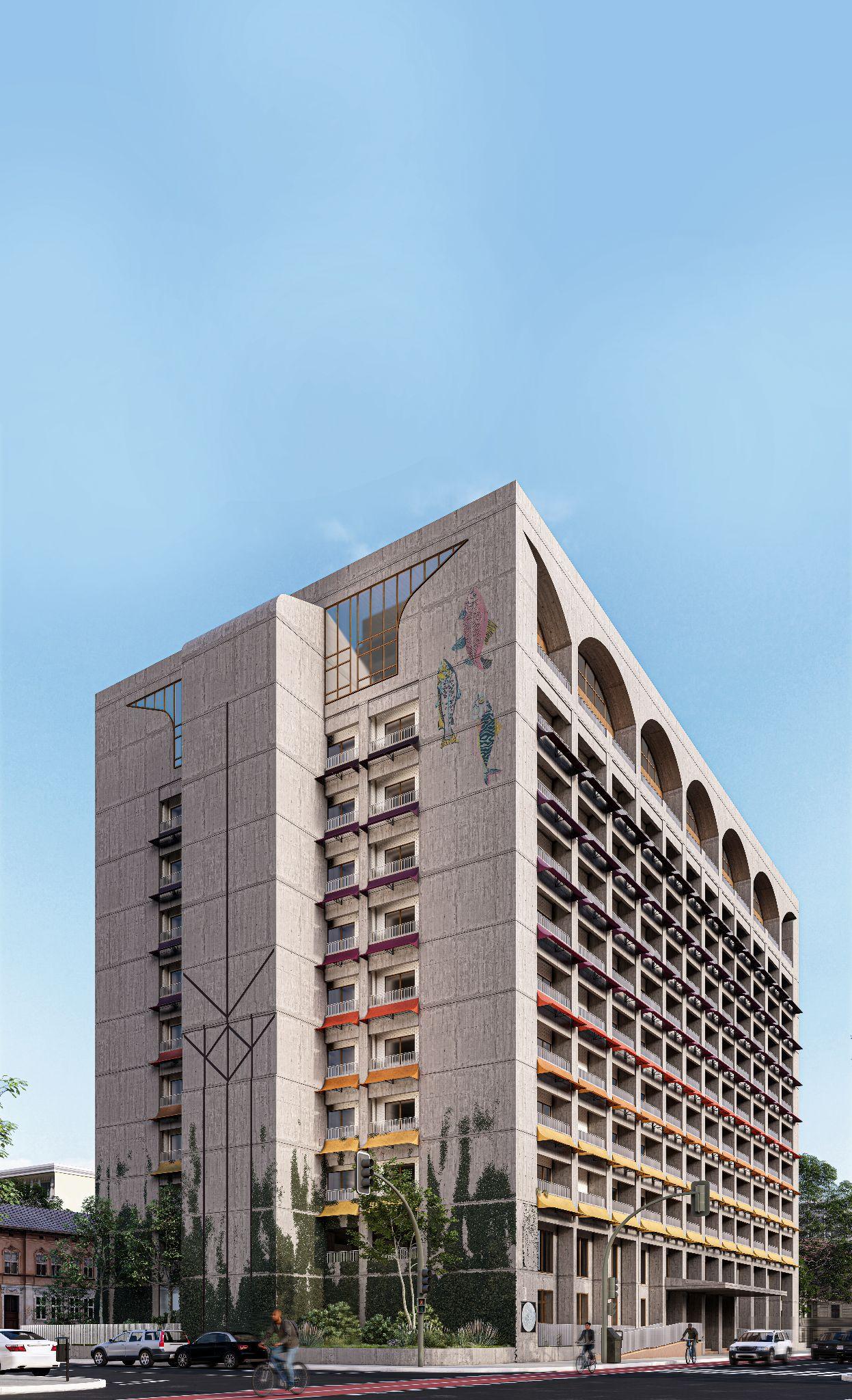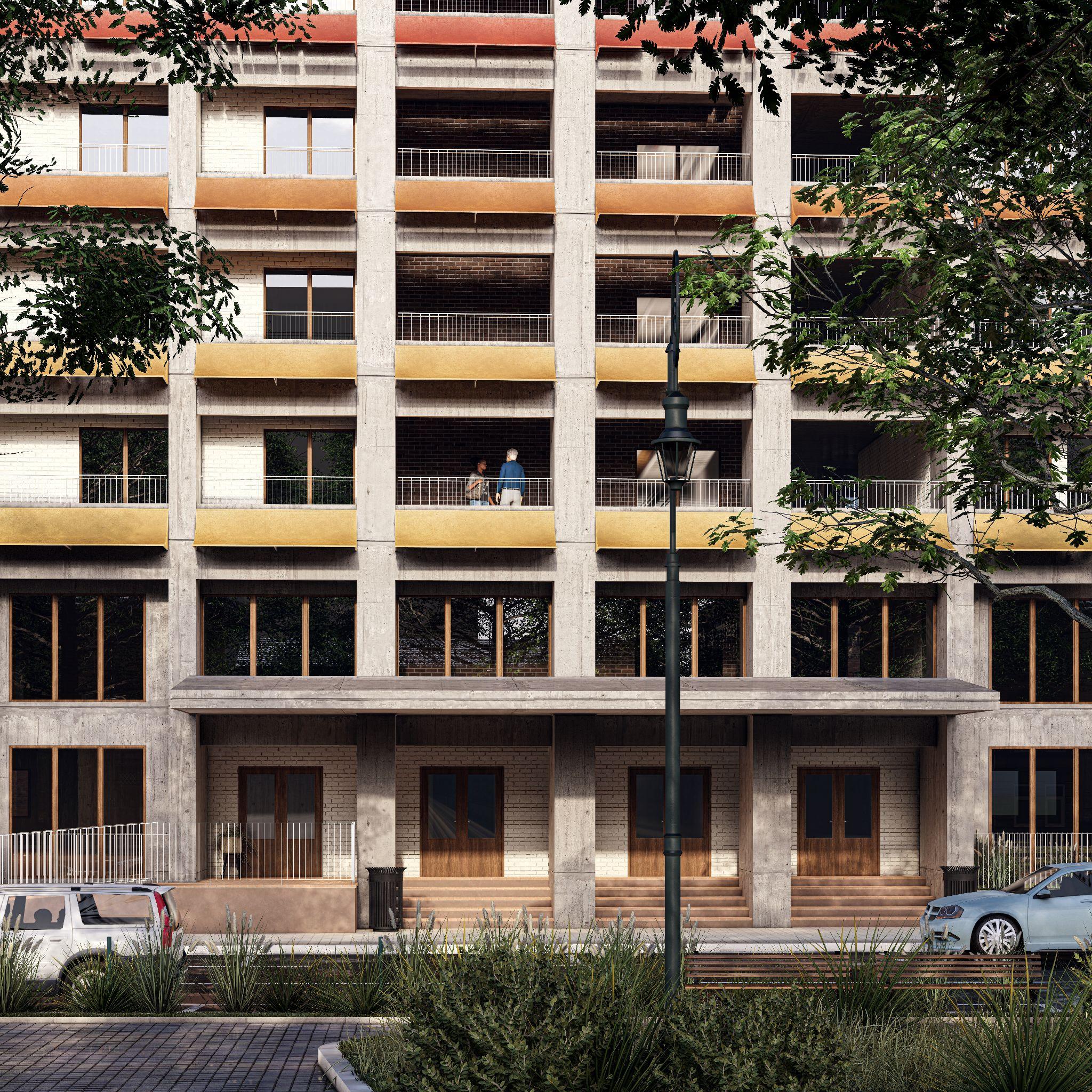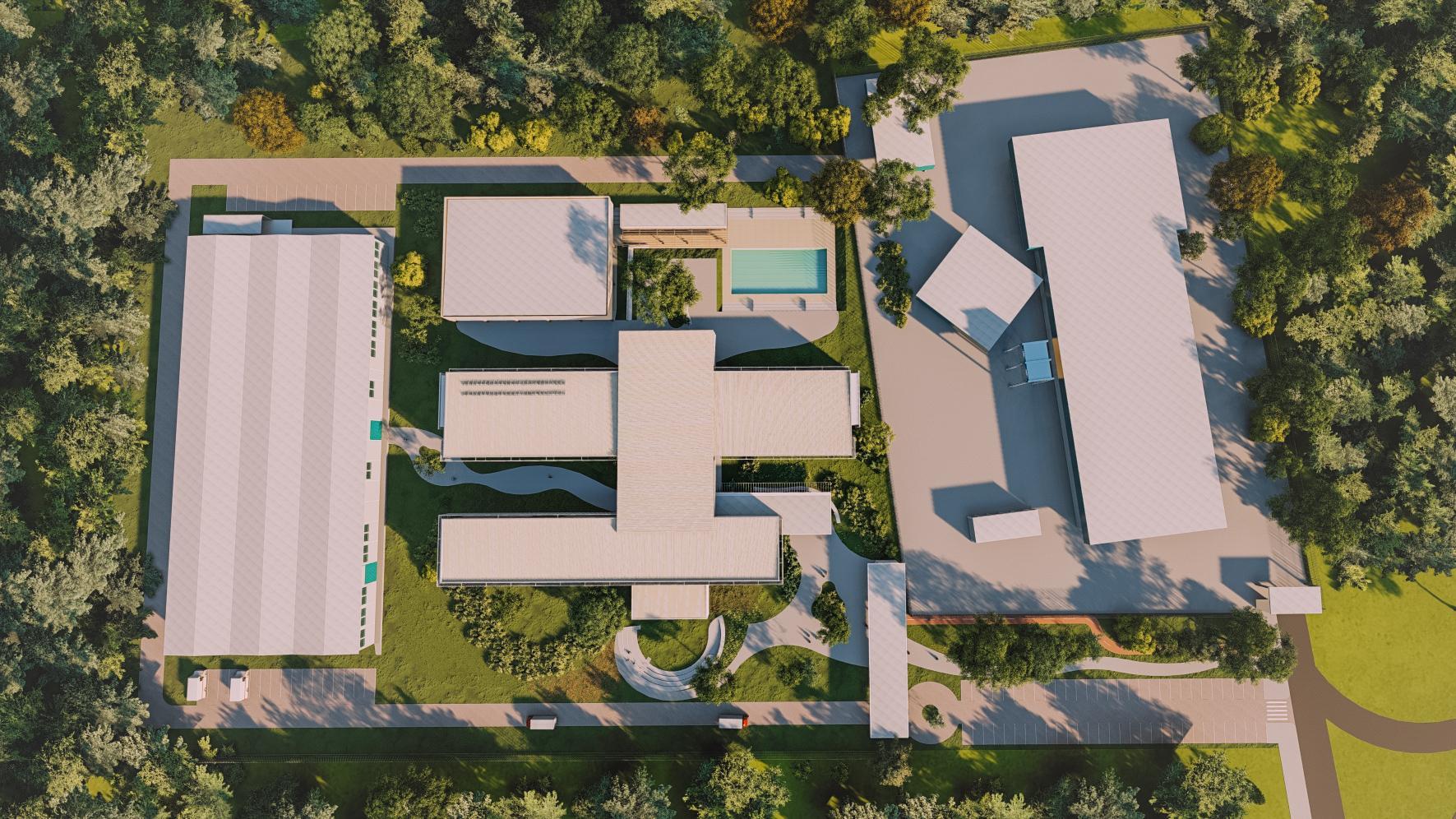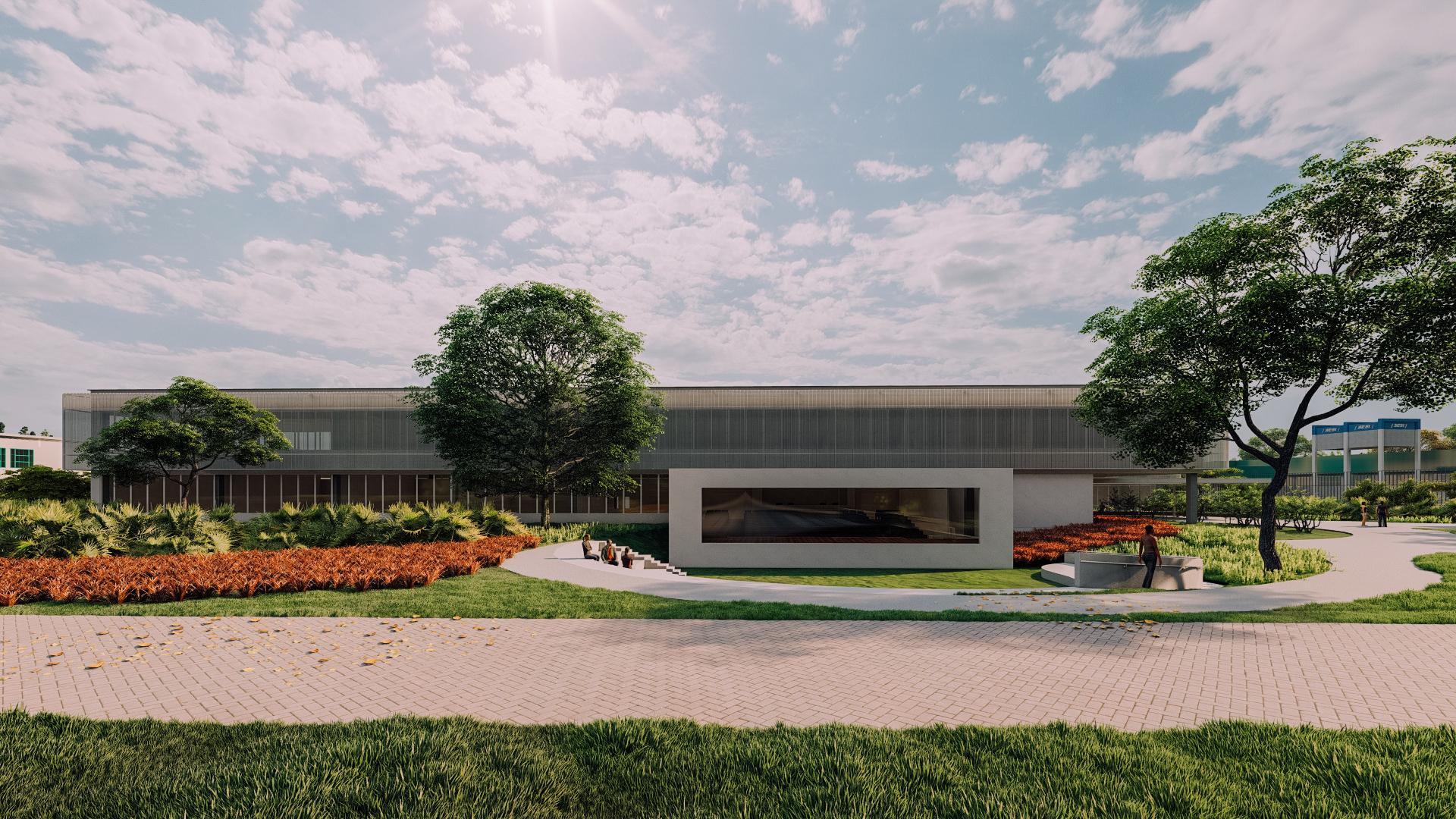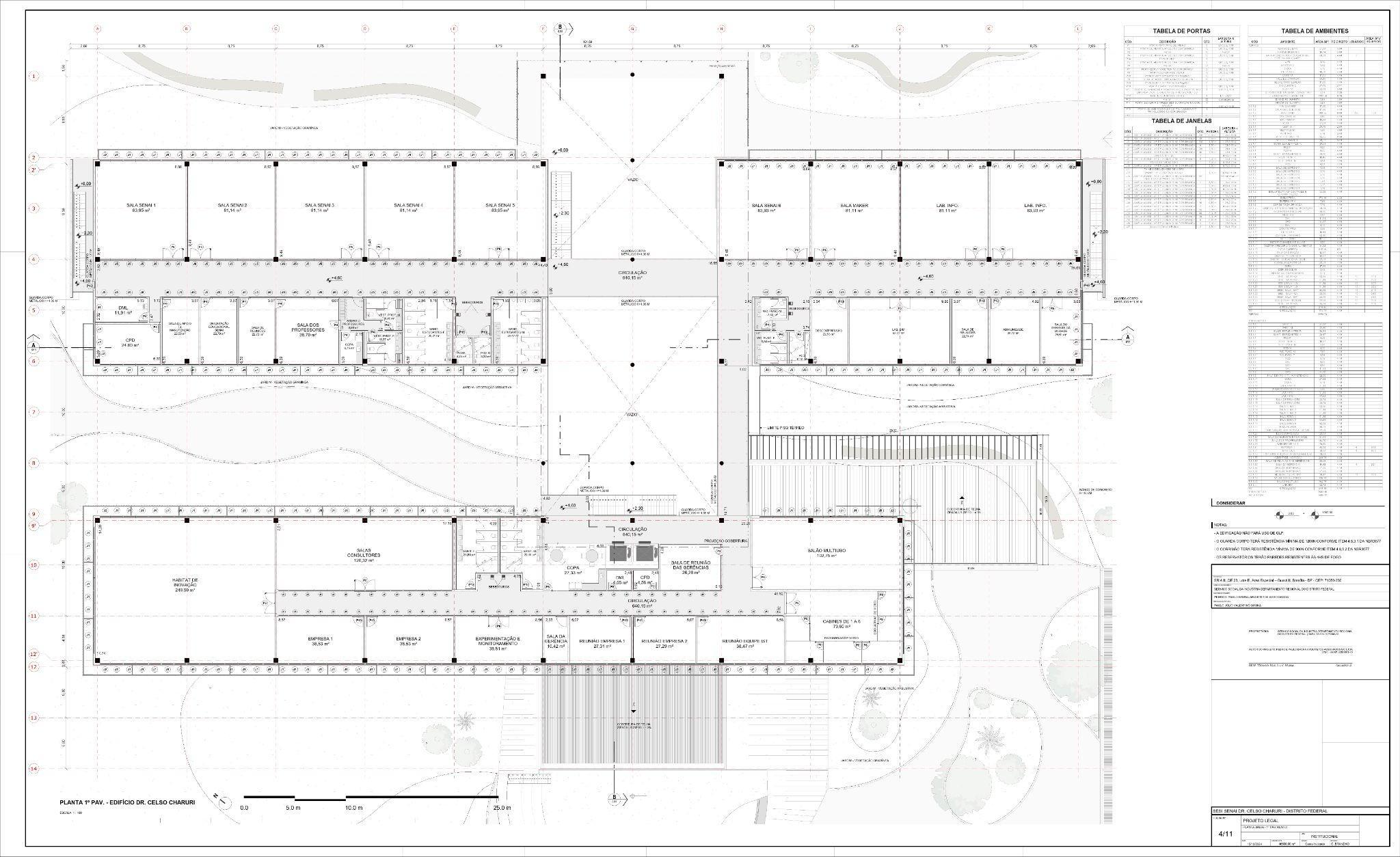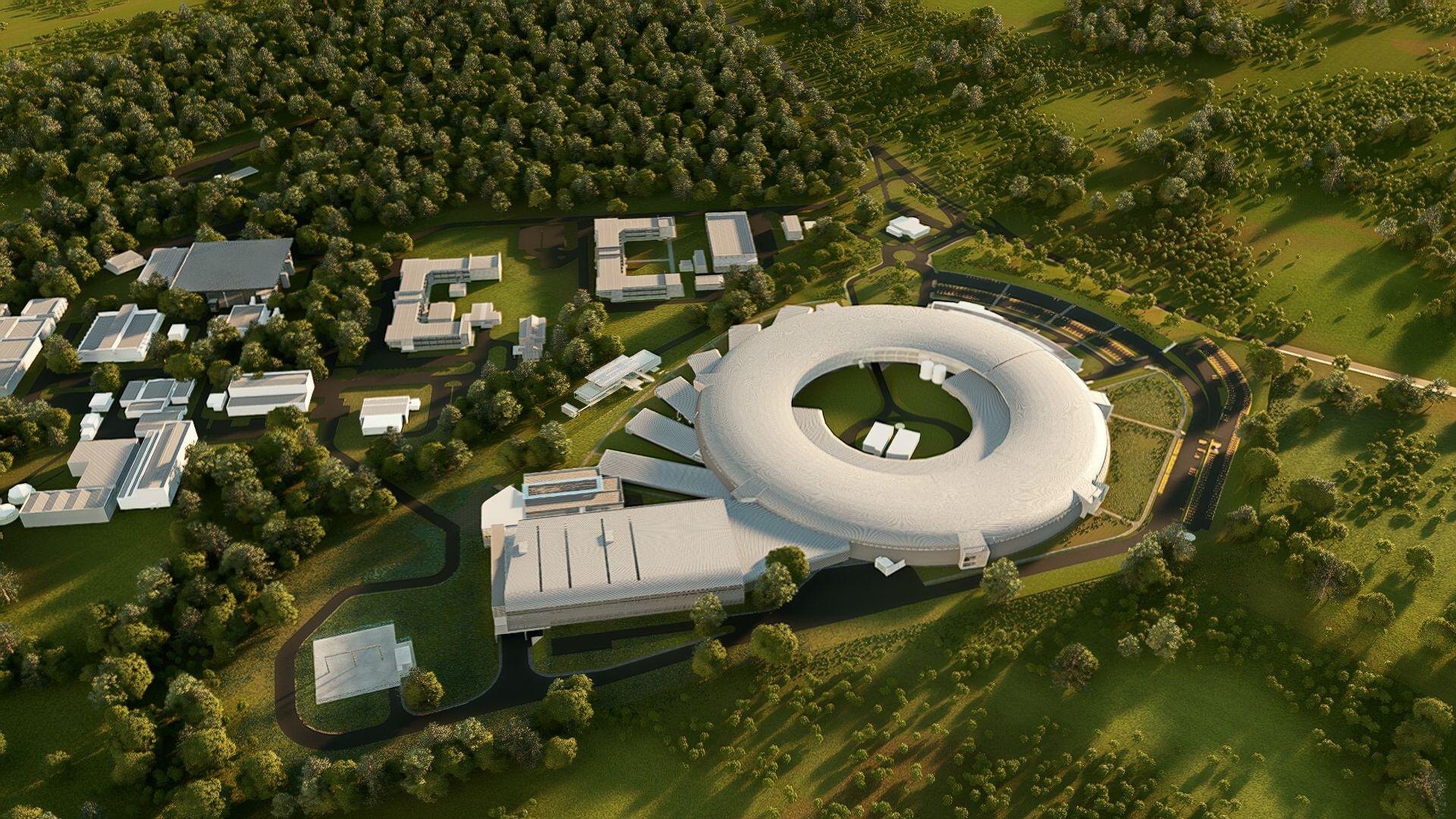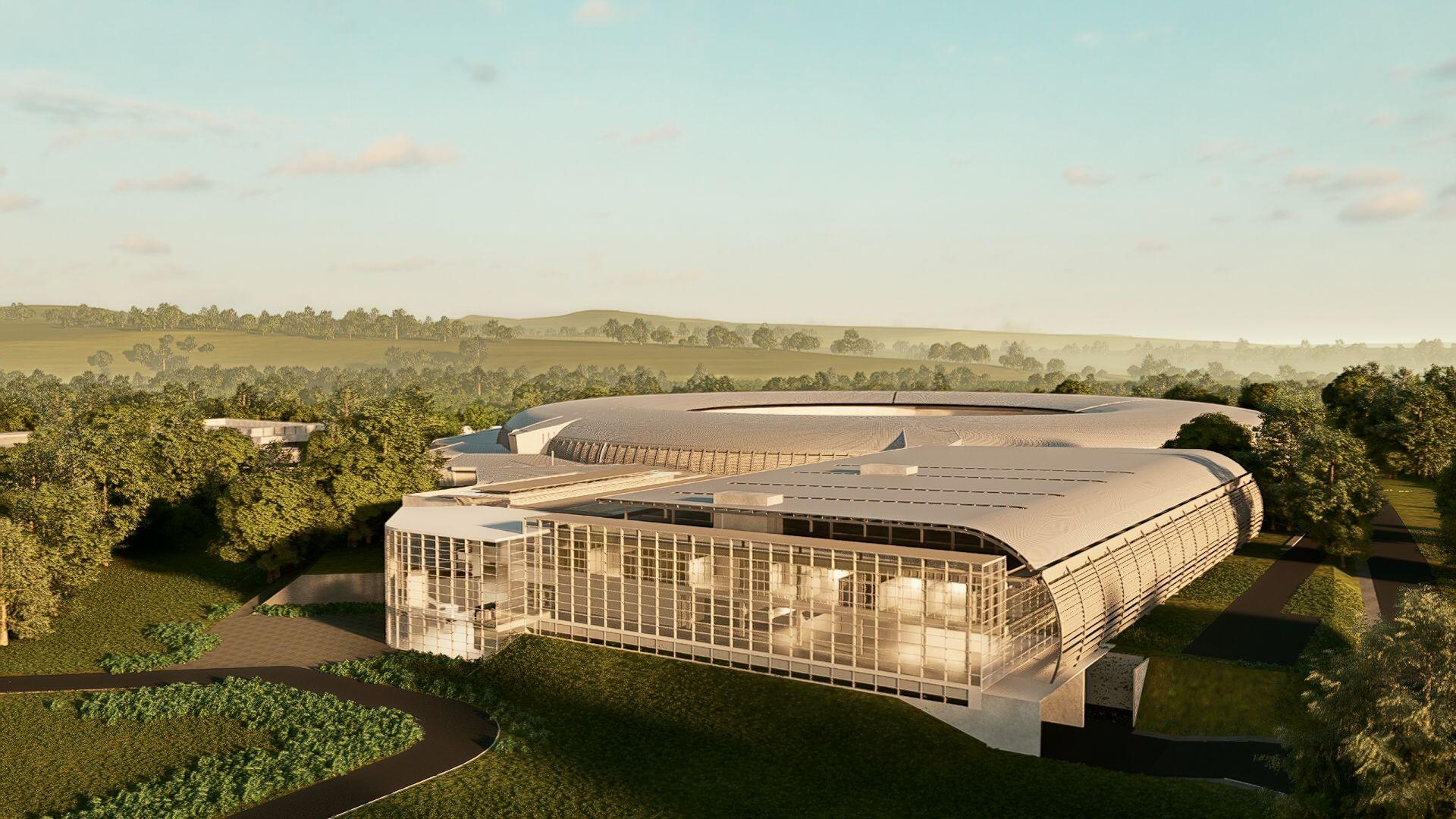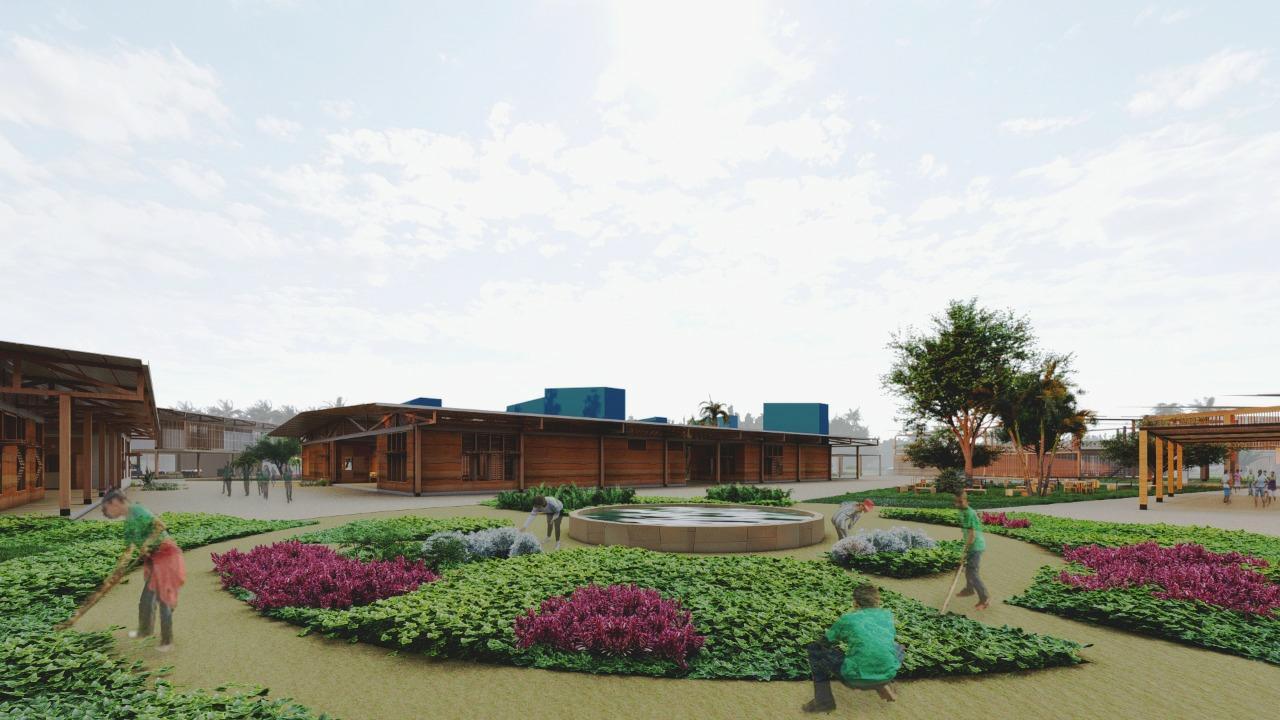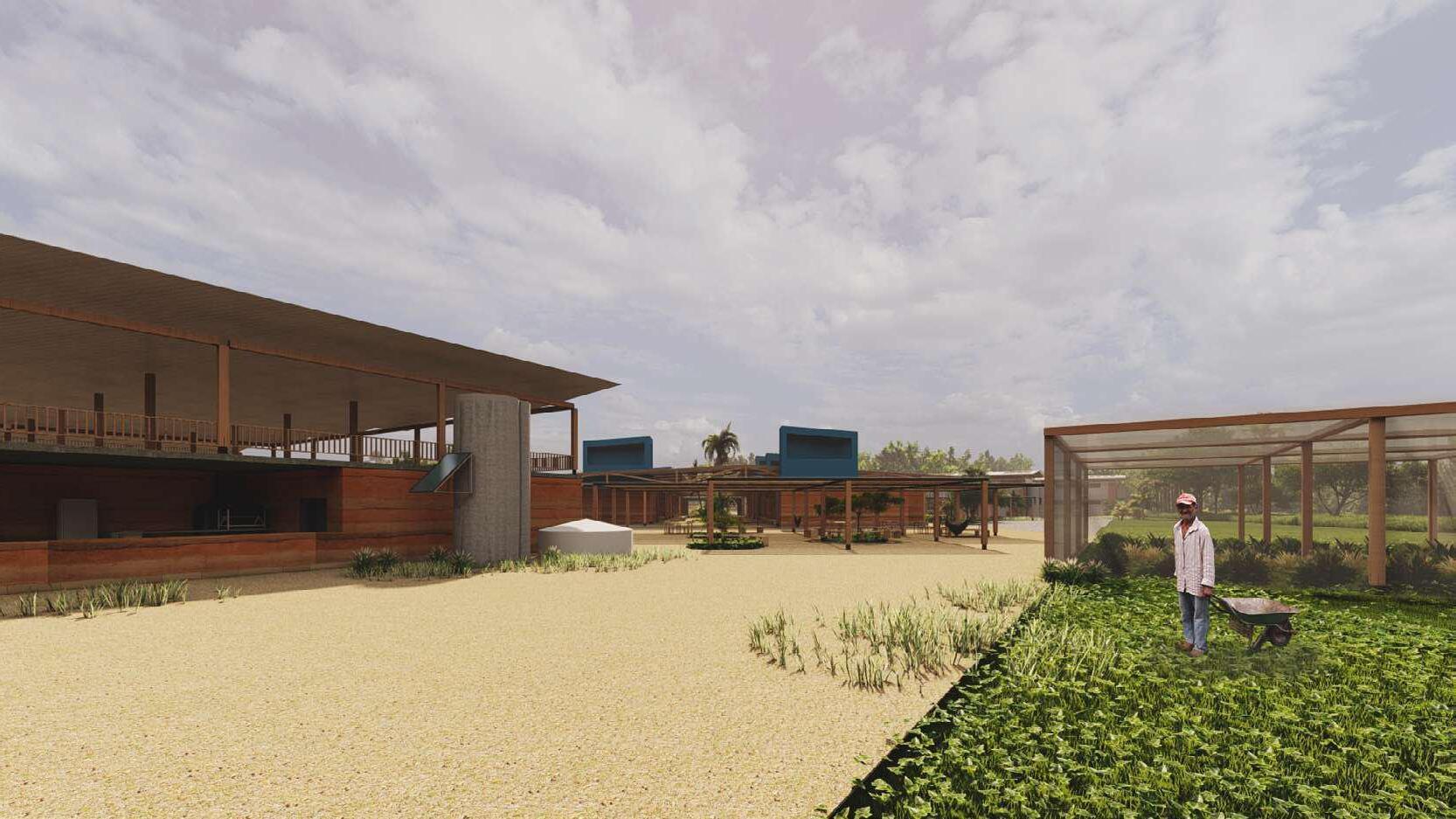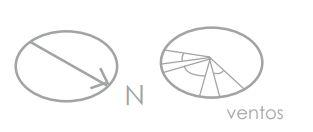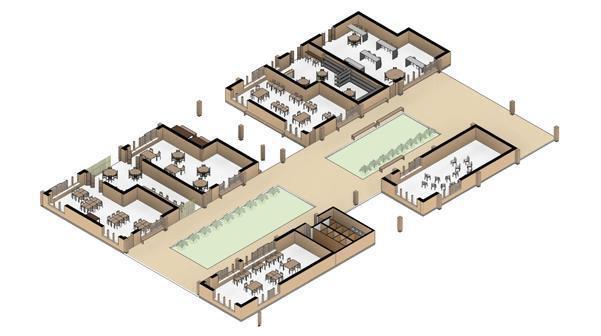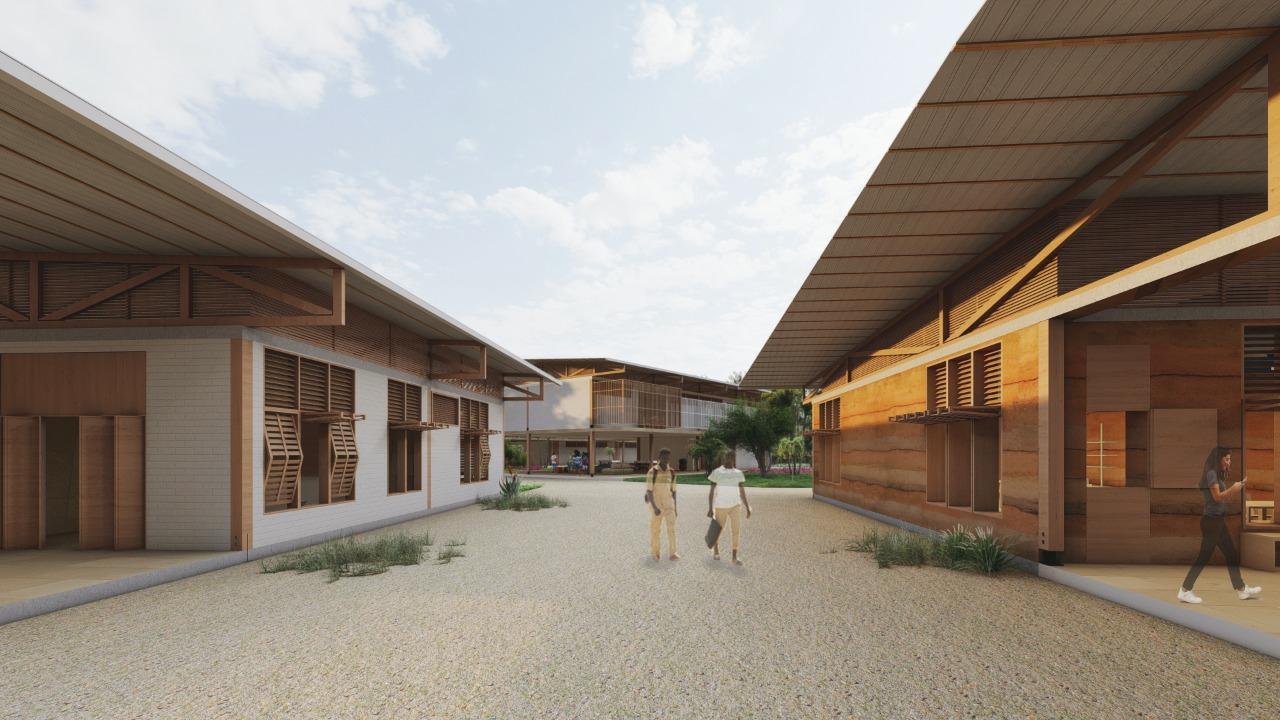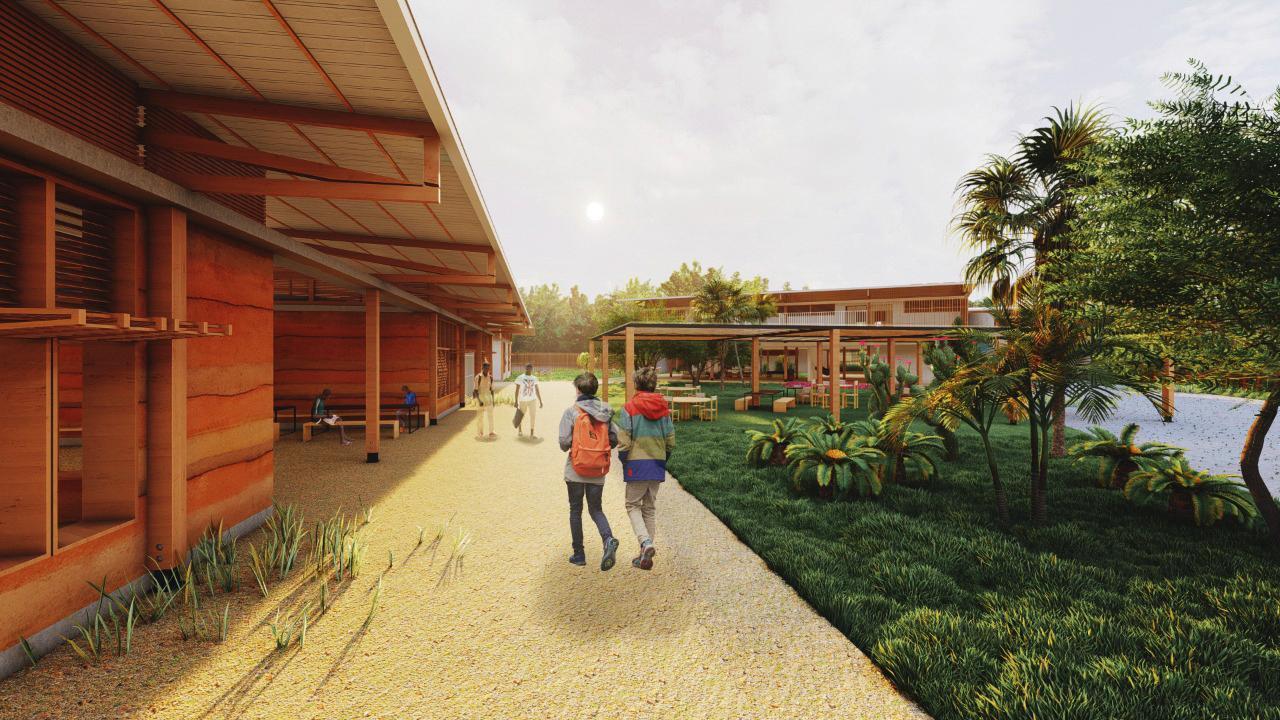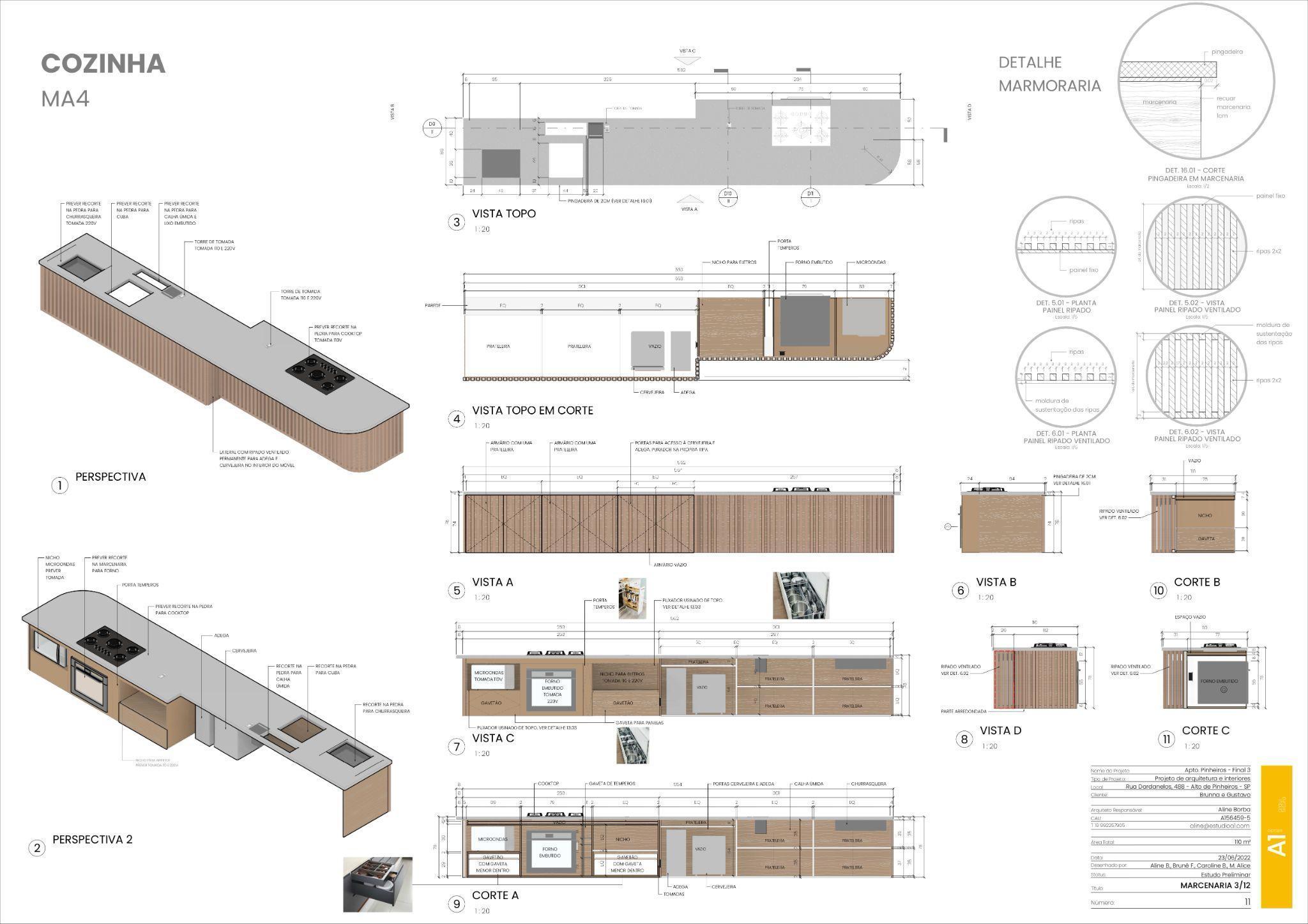PORTFOLIO CAROLINE BRANDÃO
CONTACT INFORMATION
CAROLINESANTOSBRANDAO@GMAIL COM
CAROLINE BRANDÃO |LINKEDIN +5511995742203
BRAZIL
EDUCATION
2016 - 2021
2012 - 2014
BACHELOR’S DEGREE IN ARCHITECTURE AND URBAN PLANNING | UNICAMP
StateUniversityofCampinas,Brazil-The second-bestUniversityinLatinAmericain2024 byTimesHigherEducation(THE)
. 1ST PLACE intheJoaquimGuedesContestfor thebestundergraduatefinalthesisin architecturein2021.
Finalgrade:10/10.
“The new rural school in Missão Velha, Brazil's semi-arid region"
Myresearchfocusesonaruralareainthestate of Ceará, which faces challenges related to underdevelopment. The project explores the pedagogy of alternation, where students alternate between school and home every 15 days. This approach values rural practices, aligns education with the agricultural cycle, and enables students to contribute to their families while engaging in an education that reflects theirlocalrealities.
This project was entirely developed using the BIM Revit software to create conceptual designs and3Dmodels.
HIGH SCHOOL DIPLOMA WITH APPLIED PRACTICAL CLASSES IN CONSTRUCTION ENGINEERING | ETEC MANDAQUI
. 1ST PLACE forbestprojectandmodelofthe year2013.
VOLUNTEER WORK
2022
ASSISTANT AND CRAFT TEACHER
QuillartArtSchool|Peru|1month
.Ienhancedmyspanishlanguageproficiency .Idevelopedteachingskills .Icultivatedempathy,patience,leadershipand creativity.
VOLUNTEACHER
2016
CidadãoPróMundo|Brazil|volunteacher| 4months
Created a comfortable space where low-income youth and adults could feel at ease while learning english, enhancing my own english language proficiencyaswell.
TECHNICAL SKILLS & CERTIFICATIONS
BIM SOFTWARE: REVIT NAVISWORKS ARCHICAD
RENDERING & DESIGN: LUMION SKETCHUP PHOTOSHOP INDESIGN
CERTIFICATIONS: NAVISWORKS(2024) REVIT(2016) ADVANCEDEXCEL(2014)
LANGUAGES
Portuguese
English
AWARDS
. 3RD PLACE IN ZEZÉU RIBEIRO
ARCHITECTURE AWARD (2024):
Recognition for transforming a historic social building in Manaus into a multifunctional community hub.
. 1ST PLACE IN THE JOAQUIM GUEDES CONTEST (2021):
Recognition for the best undergraduatefinalthesis:aschool project in Brazil's semi-arid region that empowers students through hands-on learning, bridging classroom knowledge with local practicestofostersocialchange.
PROFESSIONAL EXPERIENCES
ARCHITECT | BIM MODELER
PEDRO
E PAULO BRUNA ARQUITETOS ASSOCIADOS (PPBAA)
. I independently led Revit modeling for a 15,000 m² High School, delivering permit drawings, presentations and Lumion renderings and earning client praise for efficiency and proactive problem-solving.
. I played a key role in modeling ORION, Latin America’s first NB4 lab and the only one in the world directly linked to the Sirius particle accelerator. In a tightdeadline,Iconverted2DAutocaddrawingsintoa 3D Revit model, developing custom families to meet itsuniquerequirements.
. I promoted more efficient BIM workflows by demonstratingthatdirectmodelinginRevit-without starting in AutoCAD - saves time, improves coordination, and provides a clearer project overview fromthebeginning.
INTERN > JUNIOR ARCHITECT | BIM COORDINATOR
ESTÚDIO A1
. Contributed to the design development and construction documentation of interior design, residentialandcommercialprojects.
. Helped develop the office’s Revit template, standardizing processes and improving efficiency across projects. This experience allowed me to apply keyaspectsofaBIMManager’srole,suchasworkflow optimizationandteamcoordination.
TRAINEE > PROJECT MANAGER
PROJEC | non-profitjuniorcompanyformedonlybystudents of the architecture and urbanism and civil engineering courses at unicamp, our projects were aimed at ngos or low-budgetclients.
. Coordinatedteamsonresidentialandcommercial projects,developing3Dmodelsandconstruction drawingsinRevittoenhanceclientunderstandingof designproposals.
. My team successfully tackled a challenging of a houseina4x21lotintheoutskirtsofGuarulhos(Brazil)
Our goal was to enhance lighting, ventilation, and aestheticstoimprovethefamily'squalityoflife.Ratherthan buildingontheirown,theyreceivedourguidancetocreatea well-planned,brighter,andmorecomfortablehome,making themostoftheirnarrow,steeplot.
01
TAMBAQUI COMPLEX
. 3rd place in Zezéu Ribeiro Architecture Award (2024): SocialHousingProposal
Location: Manaus|Brasil
Team: AmandaAmparo,CarolineBrandão,FranciscoNetto, JulianaOliveira,ThiagoKeltke
Software: RevitandLumion
TheTambaquiComplexisahistoricgovernmentbuildingin Manaus, located in the heart of the Amazon rainforest. This project seeks to transform the site into a vibrant community hub, offering 120 affordable housing units alongside essential services such as childcare,healthcare,andlearningspaceswhereresidentscangain newskillstoenhancetheiropportunitiesinthejobmarket.
By revitalizing the historic downtown, the complex aims to create a safer, more dynamic neighborhood while empowering the localcommunity.
TheTambaquiComplex isseparatedin distinctareas:redforpublicspaces,yellow forresidentialandleisureareasexclusiveto residents,andblueforsemi-publicspaces focusedonhealthandinstitutional activities.
✱ TheGroundFloorengageswiththe street,offeringamarket,apopular restaurant,andchildcareservicestoboth residentsandthegeneralpublic.
✱ The2ndPublicFloorservesthe community:
.Acomputerlab,acarpentryworkshop. Thesespacesaimtoenhancejob opportunitiesforthelocals.
.Women'shealthcenterwithapharmacy. Itprovidesessentialhealthcareservicesto supportlocalwomenandfamilies.
✱ The10thflooroffersbothpublicand privatespaces:apublicauditoriumanda leisureareawithasportscourt,gym,anda playroomonlyforresidents.
✱ Themezzaninehousesapartyhallwitha barbecueareaforresidents,whichcanalso beusedforcondominiummeetingsand otherevents.
✱ Thebasementcontainstechnicalspaces, suchasamachineroom,storage,andwaste disposalrooms.
Standard Flooring
Thetypicalfloorisexclusivelydedicated toresidentialunits.Weaimedtomaximize thefloorplantocreatethelargestpossible numberofapartments,whileensuringthe quality of the units. Each floor accommodatesupto15apartments.
Thedesignaccommodatesavarietyofunit sizes,from1to3bedroomstomeettheneedsof differentfamilies.Eachfloorincludesatleast oneaccessibleunit.
To foster community and sustainability, the project incorporates shared spaces like laundries and kitchens on each floor, providing opportunities for social interaction. Along with bike racks to encourage eco-friendly transportation.
Model apartment interior visuals. The highlight is the cobogó wall and the walls finished with eco-friendly lime-based bricks.
Standard flooring.
This project prioritizes sustainability by using localmaterialssuchascumaruwoodandeco-bricks made from water, earth, and a small amount of cement. These choices, coupled with lime-based paint and bioclimatic design strategies, create a healthier and more energy-efficient indoor environment. To enhance ventilation and ensure privacy,eco-bricksarearrangedinawaythatcreates gapsbetweenthem,knownascobogós,atraditional Brazilianarchitecturalelement.
ToaddressManaus'shotandhumidclimate,the
projectincorporatesaventilationshaftcombined with a roof opening, creating the chimney effect. This strategy helps regulate indoor temperature by drawing out hot air and promoting natural ventilation.
TobringalightertouchtothelistedBrutalist building, the existing awnings were revitalized with a gradient color scheme, a creative solution that respects the building's heritage and local regulations.
Diagram illustrating the chimney effect in the ventilation shaft
Lighting and ventilation diagram.
Integration of the building with its surroundings, highlighted by colorful awnings.
TECHNICAL HIGH SCHOOL
Location:Brasília
Team:CarolineB.withPPBAAteam
Software: RevitandLumion
The Technical High School is an example of Brasília’s modernist architecture, with its layout inspired by the urban design of the capital of Brazil. The school’s spatial organization divides areas for both high school and technical programs, spreading out to fully utilize the large site.
During the Schematic Design phase, I contributed tothecreativeprocess,definingtheschool’svisualidentity and facades. I also produced all technical drawings, developed the 3D model in Revit, created renders in LumionandpreparedthePermitDrawings.
Overall view of the school.
Site Plan view.
Entrance view.
View of the auditorium, which extends to the outdoor amphitheater for school or community presentations.
The Design Development
The Technical High School was designed based on three principles: the characteristics of thesite,themodernismarchitecturalidentityof the brazilian capital, Brasília, and the high annual temperatures and low humidity during thedryseason.
The building is structured into two wings connected by a covered patio, promoting cross-ventilation and expanding shaded areas forsocializingandandoutdoorintegration.
The landscaping, characterized by organic forms, contrasts with the regular geometry of the building, guiding students and visitors to thereceptionandothercommonareas,suchas theentranceandtheamphitheater.
The auditorium extends into an outdoor amphitheater, inviting students and the community to participate in practical classes, lectures, and artistic presentations, which can eventakeplaceonweekends.
ORION LABORATORY - CNPEM
HighbiosafetylaboratorycomplexinextensiontotheSirius particleacceleratorlocatedinCampinas,Brazil.
Location:Campinas,SP-Brasil Team:PPBAA Software: Revit
IncollaborationwithacolleagueatPPBAA,Iplayeda key role in modeling the architectural project for Orion, a pioneering laboratory in Latin America dedicated to advanced research on highly infectious diseases. This unique project,integratedwithSirius,aparticleaccelerator,provided me with invaluable experience in the field of architectural design.
The project was initially developed in AutoCAD and needed to be converted to Revit within a tight deadline. I joined the project to take on the modeling, creating custom familiestomeetitsuniquerequirements.Injustafewdays,I successfullycompletedthetask,demonstratingmyabilityto adaptquicklyanddeliverhigh-qualityworkunderpressure.
3D images of the laboratories Sirius and Orion, by the PPBAA office.. PORTFOLIO
Orion’s entrance view, by the PPBAA office.
THE NEW RURAL SCHOOL IN MISSÃO VELHA, BRAZIL'S SEMI-ARID REGION
. 1st place in the Joaquim Guedes Contest forthebestundergraduatefinalthesisinarchitecturein2021.
Location:MissãoVelha,Ceará-Brazil Team:CarolineS.Brandão
Software: RevitandLumion
In the heart of Brazil's semi-arid region, the school project in Missão Velha stands out for its unique approach to education. By integrating local identity, practices, and the agricultural cycle, the school fosters a strong connection betweenlearningandreal-worldexperience.
To reduce dropout rates, students from remote regions spend15daysattheschool,immersingthemselvesinacademic knowledgeandpracticalskills.Duringthesubsequent15daysat home,theyapplytheirlearningtotheircommunitiesandfamily properties, reinforcing the link between education and local realities.
Beyond academics, the school collaborates with the community, promoting agroecological practices and partnering with a local health unit. This comprehensive approach aims to socially transform the region, ensuring education aligns with localneedsandchallenges.
links: Concurso Joaquim Guedes
o Projeto
Mandala, the heart of the New Rural School of Missão Velha.
While Brazil is rapidly urbanizing, a significant partofitspopulationstilllivesinruralareas,where education often remains neglected. Many schools in these regions adopt urban models, which fail to address the realities of rural life, such as accessibility and integration with agricultural practices.
Through interviews with coordinators at the JeanHébetteandDomFragosoFamilyAgricultural Schools,Ilearnedtheimportanceofdesigning schoolstailoredtoruralcontexts.Theseinstitutions successfully blend education with community engagement and agricultural activities, creating empoweringlearningenvironments.
Inspired by these examples, I developed The New Rural School in Missão Velha project, which seeks to address the specific needs of rural communities and combat social stigma through innovativeeducationaldesignandpractices.
ABOUT THE PROJECT
The New Rural School in Missão Velha is more than just a school; it’s a community hub. Designed to empower local residents and strengthen their connection to the land, the school features spaces for learning, gathering, andproduction.
The courtyards are inviting and functional, hostingcommunityeventsandcelebratinglocal culture. Productive areas, such as gardens, a breadhouse,andananimalmanagementzone, provide food for the school community and foster sustainable practices. At the heart of the siteplanaremandalas,circularplanting
arrangements that optimize land use. These areas house diverse crops, including fruits, vegetables, medicinal herbs, and species for reforestation.
Additionally, the project dedicates a significant area to the reforestation of the Caatinga biome, a unique and endangered ecosystem of the region. By integrating education, culture, agriculture, and environmental conservation, the New Rural School aims to create a vibrant, self-sufficient, andecologicallyresponsiblecommunity.
Traditional Cultivation Area
Covered space for lectures, events, relaxation
Cisterns
Chimney openings of the Theoretical Classrooms
Seedling Nursery
Bioclimatic Strategies
Due to the high temperatures of the humid tropical climate (average temperatures around 27º C, low thermal amplitude, and highly irregular rainfall patterns), the project incorporates bioclimatic strategies to minimize thermaldiscomfortthroughouttheyear: - Naturalventilation; - Shading; - Evaporativecooling.
Some of the strategies adopted include rammed earth walls, solar chimneys, cross-ventilation, and agroforestry. In regions like Missão Velha, especially during the hotter months,hightemperaturescancompromise
natural ventilation, leading to thermal discomfort.
However, an effective technique to induce ventilation and extract hot air from the environment is the solar chimney. The solar chimney utilizes solar radiation to heat the air and promote the chimney effect, making it idealforlocationswithweakorabsentwinds.In otherwords,it'sanexcellentstrategyforcooling indoorspaces.
During the night, the airflow reverses, and the chimney acts as a wind collector, providing nocturnalventilation(CAVALCANTI,2011).
East Facade: direction of prevailing winds.
Functioning of the Solar Chimney
Perspective Section of Theoretical Classrooms - North Facade
Perspective Section of Theoretical Classrooms - South Facade
Highlight of the theoretical classroom block in the layout.
Thesolarchimneys,besidesplayingacrucial role in the thermal comfort of the rooms, offeringaneffectivesolutiontothechallengeof the intense heat of the Caatinga region, also serveanaestheticfunction.Withtheirturquoise blue color inspired by the renowned local craftsman Espedito Seleiro, they become an unmistakable landmark of the school in the community.
Following the same line of identity and sustainability, the walls are constructed with rammed earth. With a thickness of 40 centimeters, these walls not only reinforce the local identity of the construction but also promotesustainablepractices.Functioningas
thermal batteries, they absorb daytime heat to maintainapleasantindoorenvironmentand,at night, gradually release this heat, ensuring efficientcoolingofthebuilding.
Bibliography
CAVALCANTI, Fernando Sá. RORIZ, M. - Ventilação Natural em espaços internos a partir da utilização de chaminé solar. In: Encontro Nacional e Latino-Americano sobre conforto no ambiente construído, 2011, Búzios, RJ. anais 2011.
NEVES, Leticia de Oliveira. 2012. Chaminé Solar como Elemento Indutor de Ventilação Natural em Edificações. Campinas, SP : s.n., 2012
Administration
Block
Wooden Trusses
Rammed Earth Walls
Double Roofing
Venetian Paneling protecting the space between roofs
Wooden Casement Windows with vertical opening
Materiality of Theoretical Classrooms.
7
Bioclimatic Strategies Adopted: Climate Consultant
Roof Slope: protection against rain and shading of the balconies
High Thermal Mass Materials
Chimney Effect
Theoretical Classrooms.
Theoretical Classrooms
Another strategy adopted was the design of doubleroofingintheTheoreticalClassrooms:
Thefirstroofismetallicandissuspendedby wooden trusses. It acts as the primary protection against heat, blocking most of the sunlightandhelpingtoreducethetemperature inside the classrooms. The second roof, with a vaulted shape, is supported by metal beams. This serves as a second line of defense against solar heat and also enhances the room's acoustics. The vaults are positioned with appropriate spacing between them, promoting effective ventilation and allowing the exit of heatedair.
Between the two roofs, wooden venetian panels are installed to protect the space from insectentry.
The classroom design was intentionally conceived in an L-shape to accommodate the solar chimney. This layout not only optimizes space but also provides a suitable environment for the introduction and integration of different pedagogicalmethods.
Tosupportproject-basedlearning,therooms are configured to facilitate small group work, typically consisting of 2 to 6 students. This approach promotes informal and collaborative learning, encouraging the exchange of ideas and joint problem-solving. Additionally, circulation spaces are strategically designed with alcoves to allow students to gather and work together, further strengthening collaborative dynamics and interaction among them.
Internal view of the double roofing of one of the classrooms.
Courtyard and Central Planter for Theoretical Classrooms.
Theoretical Classrooms
Corridor with study and rest space
Student Dormitory
Missão Velha Square
Recreation Area and Dormitory Balconies.
CONSTRUCTION DOCUMENTATION OF INTERIOR DESIGN
Location:SãoPaulo|Brasil Team:CarolineB.withEstúdioA1team Software: Revit
ThesearesomeoftheprojectdrawingsIcontributedto, especiallyininteriordesign,whereIusedparametricRevit familiestoimproveinformationmanagementandproject efficiency,followingBIMprinciples.
DETAILS DRAWINGS |
THANK YOU



















































